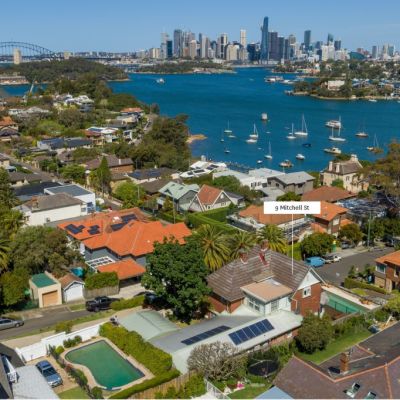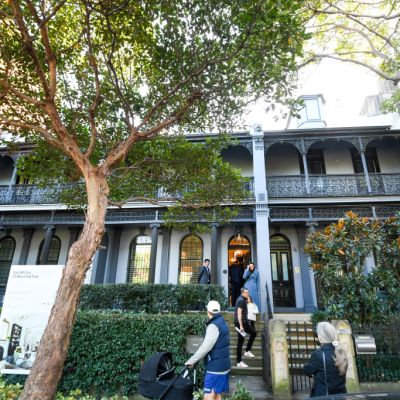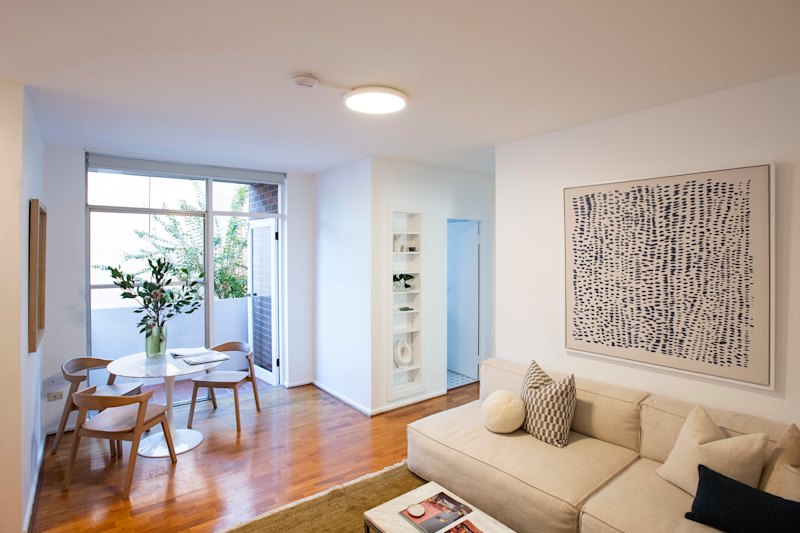Some households will need $22,458 extra a year to avoid mortgage stress if rates rise by 1 percentage point

Households with a $1 million home loan would need an extra $22,458 in income a year to avoid mortgage stress if interest rates rose 1 percentage point, new data reveals.
Despite the Reserve Bank deciding to hold its cash rate at a record low of 0.1 per cent after its November board meeting on Tuesday, there are growing expectations that will not remain the case next year. Experts believe the inevitable rate rise will push many households into mortgage stress and signal the “beginning of the end” of the great COVID-19 house price boom.
New analysis by Canstar shows that a 1 percentage point rise in the average variable interest rate of 3.09 per cent on a $1 million mortgage will see monthly repayments reach $4826 – or an extra $561 a month.
That means households will need $193,045 in income – or an extra $22,458 a year – to avoid mortgage stress, which is when a borrower spends 30 per cent or more of their income on repayments.
It is a similar story for investors, who would need $201,013 in income – or an extra $22,955 a year – to meet the monthly repayments on a $1 million mortgage without mortgage stress.
An increase of 1 percentage point on their average variable interest rate of 3.43 per cent would see the monthly repayment rise to $5025 – or an extra $574.
Australia’s median house price edged closer to $1 million in the past nine months alone, Domain data shows, with Sydney’s just shy of $1.5 million and Melbourne cracking more than $1 million.
|
Change in home loan monthly repayments due to rate increase | |||||||
|
Borrower type |
Loan amount |
Average variable rate |
Increase to rate |
Monthly repayment |
Difference in monthly repayment |
Income required to avoid mortgage stress* |
Difference in income required |
|
Residential |
$500,000 |
3.11% |
– |
$2,138 |
– |
$85,511 |
– |
|
0.15% |
$2,179 |
$41 |
$87,150 |
$1,639 | |||
|
0.25% |
$2,206 |
$68 |
$88,252 |
$2,741 | |||
|
1.00% |
$2,419 |
$281 |
$96,755 |
$11,244 | |||
|
$1,000,000 |
3.09% |
– |
$4,265 |
– |
$170,588 |
– | |
|
0.15% |
$4,347 |
$82 |
$173,862 |
$3,274 | |||
|
0.25% |
$4,402 |
$137 |
$176,063 |
$5,475 | |||
|
1.00% |
$4,826 |
$561 |
$193,046 |
$22,458 | |||
|
Investment |
$500,000 |
3.45% |
– |
$2,231 |
– |
$89,251 |
– |
|
0.15% |
$2,273 |
$42 |
$90,928 |
$1,677 | |||
|
0.25% |
$2,301 |
$70 |
$92,056 |
$2,805 | |||
|
1.00% |
$2,519 |
$288 |
$100,743 |
$11,492 | |||
|
$1,000,000 |
3.43% |
– |
$4,451 |
– |
$178,058 |
– | |
|
0.15% |
$4,535 |
$84 |
$181,408 |
$3,350 | |||
|
0.25% |
$4,592 |
$141 |
$183,660 |
$5,602 | |||
|
1.00% |
$5,025 |
$574 |
$201,013 |
$22,955 | |||
|
Source: www.canstar.com.au – 28/10/2021. Average variable rate based on loans on Canstar’s database available for the specified loan amount, 80% LVR and principal & interest repayments; excluding introductory, first home buyer only and green only loans. Monthly Repayments calculated based on principal & interest repayments made over a total loan term of 30 years. Mortgage Stress classified as when a borrower spends 30% or more of their income on repayments. | |||||||
By September, the average loan size across the country rose to a record high of $574,000, with NSW seeing the largest rise at an average of $750,000, according to the Australian Bureau of Statistics. The average loan size in Victoria is $606,000, while in Queensland it is $483,000.
Canstar finance expert Steve Mickenbecker said borrowers should prepare for multiple interest rate increases in the next few years.
“An increase of 0.25 per cent will add around $140 to the monthly repayment on a $1 million loan, which isn’t a figure that most borrowers will lose sleep over, but rate rises won’t stop there,” Mr Mickenbecker said.
“A year on and you would have to expect a cash rate of at least 1.00 per cent, lifting the increase by around $560 a month, meaning the situation for many borrowers will become serious, potentially putting some into mortgage stress.
“The best preparation for the inevitability of interest rate increases is to start the higher repayments now, before the bank says the time has come.”
Making extra repayments while rates are still low will put borrowers ahead on their loans, building a personal buffer, he said.
“The time to start interest-rate-proofing yourself is now, when rates are low.”
Despite several cities around Australia reaching record-high house prices in just three quarters of this year, the quarterly rate of house price growth has eased and talks of earlier-than-expected rate rises signal “the beginning of the end” of the boom, according to Shane Oliver, AMP Capital’s chief economist.
“It is a beginning of the end, you can always debate what tips the beginning of the end … it’s often interest rate changes that signal the beginning of the end. It’s usually interest rate hikes that kill off the housing boom,” Dr Oliver said.
While large numbers of home loans were borrowed at fixed rates, it would impact potential home buyers who were already facing higher serviceability buffers and homeowners with variable rates, he said.
“It shouldn’t be a problem because if the banks have done their job of applying their buffer, people should be OK but we know it’s never that simple,” Dr Oliver said.
“If that flows through to variable rates then people with a $1 million mortgage are expecting a $600 hit to their spending power, which is quite a big impact … a 1 per cent increase would come as a shock with a lot people, they may have been tested for it but they may not have been expected to pay it.”
EY Oceania chief economist Jo Masters said the days of rock-bottom rates were over.
“It’s been pretty clear for a while now that rates have bottomed. We have already seen fixed rates increased, and variable rates are only going up,” Ms Masters said. “To prepare for that, that’s a big part of why we have mortgage serviceability buffers and why APRA increased them.”
Ms Masters said she believed any interest rate rises would affect the marginal borrower who had really stretched themselves but there were “very few applications that take out their maximum borrowing capacity”.
“To get widespread stress in the market you’d need to see the increase in the cash rate more than the serviceability buffer. That’s 300 basis points of tightening.
“Price growth will be lower than in the last year, and that’s a good thing, but I don’t think a central bank that nudges interest rates off a low base will cause mortgage stress in mortgage holders.”
The combination of Australians paying down their mortgage in the past 12 months, an improvement in the quality of home loans since the Royal Commission into banking and low interest rates meant that most homeowners should be in good stead, Ms Masters said.
We recommend
States
Capital Cities
Capital Cities - Rentals
Popular Areas
Allhomes
More










